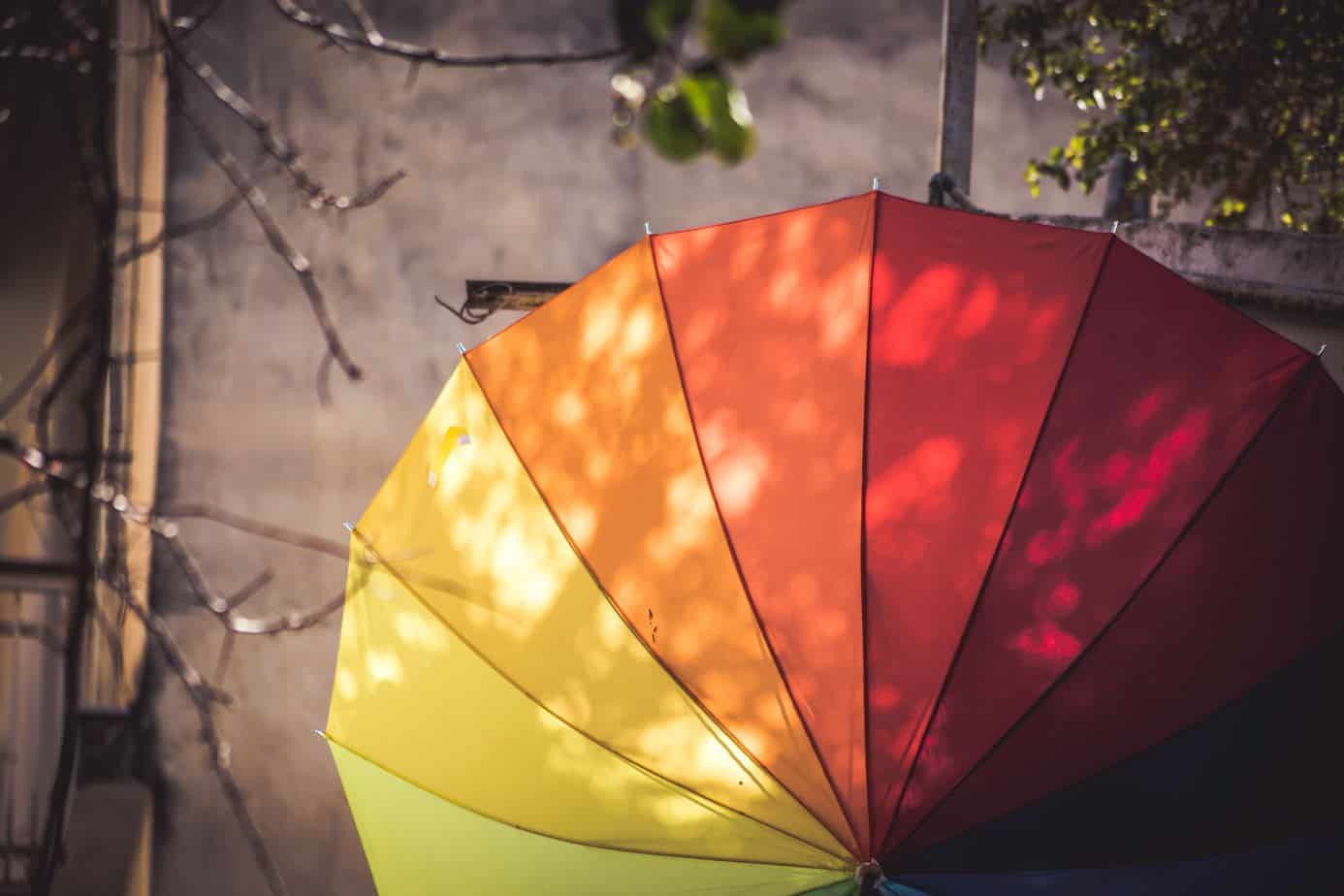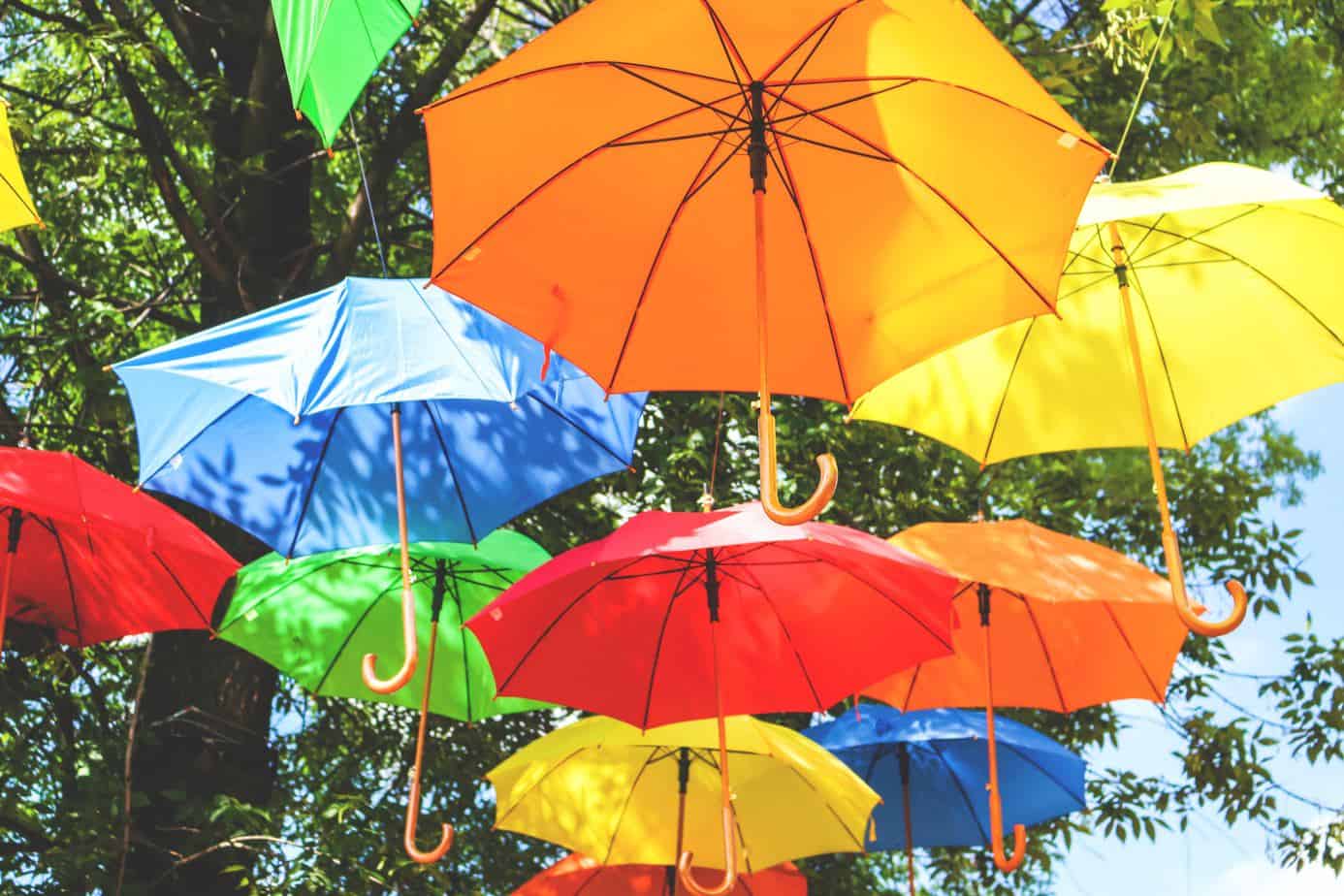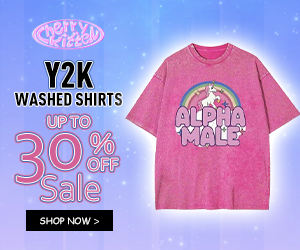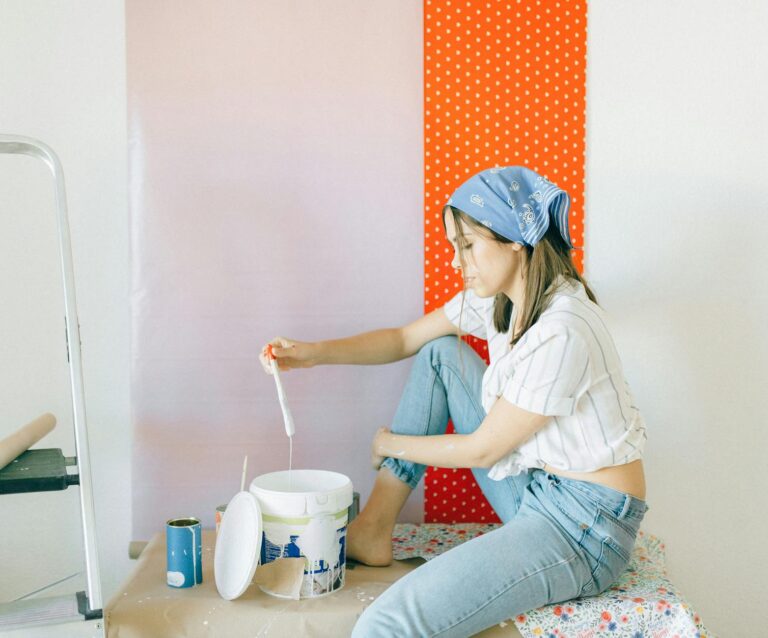Fibreglass is a hugely lucrative and in-demand material that is used by multiple industries for countless products. But why is it so popular, what are its specific advantages and why should you consider it when choosing an everyday item, like an umbrella?
In this article, we’ll establish how fibreglass is made, what it’s used for and how it’s the perfect material to construct premium umbrellas.

Contents
What is fibreglass?
Fibreglass also goes by the name ‘glass reinforced plastic’ (GRP) and is created by joining a collection of very thin fibres of glass with a binding solution. The main ingredients of fibreglass are silica sand, soda ash and limestone. Each glass fibre is often flattened into a sheet and can be constructed from various types of glass, and after, the fibreglass can be molded into multiple shapes while not compromising its strength and durability. The major types of fibreglass are:
- A glass: chemical-resistant and similar to window glass, it’s sometimes used to make processing equipment.
- AE glass: resistant to alkali.
- C glass: this chemical glass has high resistance to chemical impacts.
- E glass: a good insulator of electrical currents.
- S glass: a structural glass used for its mechanical properties.
The use of fibreglass began in World War II, after glass fibres (invented by Russel Games Slaytor) and polyester resin (used since 1935) were combined to create the strong, long-lasting product. Fibreglass was an excellent alternative to metal during wartime and currently, two million tons of unsaturated polyester resin is produced across the globe.
Due to its malleability and tenacity, fibreglass is used across a wide variety of industries to make everything from kayaks and ladders to bathtubs and circuit boards.

Beneficial properties of fibreglass
Fibreglass is an extremely versatile material which allows it to benefit multiple manufacturing sectors. But what are the main advantages of this popular material?
- Non-rotting and won’t corrode.
- Excellent thermal conductor.
- Exceptionally strong with a resistance that is better than steel.
- Great electrical insulator.
- High slip resistance.
- Incombustible.
- Easily combines with other synthetic resins.
- High impact resistance.
- Non-conductive.
- Holds its shape and won’t expand or contract with heat/cold easily.

Application of fibreglass across industries
This material is commonly used by a variety of sectors, and the global fibreglass market is predicted to reach a net worth of $18.75 billion by 2022, according to a forecast report by MarketsandMarkets. The reason fibreglass is such a popular product is due to its range of abilities. Not only does fibreglass offer longevity, versatility and safety, but it also provides high thermal insulation. This makes it one of the preferred materials for industrial gaskets, which means it’s used in machinery employed by multiple industries. Here are some of the main sectors that rely on fibreglass:
- Aviation
- Boating and marine
- Electronics
- Energy
- Food and drink
- Housing
- Manufacturing
- Medical
- Military
- Mining
- Motoring
- Paper
- Power
- Telecommunications
From planes and boats to insulation and enclosure, fibreglass is relied on throughout manufacturing to improve safety and lower production and maintenance costs. Currently, China is the largest manufacturer of fibreglass in the world, followed by North America and Europe.

Benefits of fibreglass umbrellas
It’s clear that fibreglass offers many manufacturing advantages. But how are these relevant to protecting you from wind, rain and stormy weather?
Durability
If you want an umbrella that will last, fibreglass offers excellent longevity. Fibreglass is tougher than carbon fibre, as it has a higher breaking point when flexed, as well as the ability to bend without compromising its structure. Since it’s incredibly difficult to break fibreglass and it has such a high resistance to impact, an umbrella should last you a long time if it’s constructed from this material — no matter how often it’s used or where you store it.
Being non-conductive, fibreglass is an excellent choice as an umbrella material. A fibreglass umbrella also won’t absorb moisture and, unlike steel and aluminium, fibreglass won’t corrode. This means you can use it in heavy downpours or in places with high salt content in the air without worrying that you’ll have to replace it.
Tenacity
Pound for pound, fibreglass is tougher than sheet metal, which is why it’s used for products such as wind turbines and car bodies.
Fibreglass umbrella frames are excellent for withstanding high winds and powerful downpours. Less prone to cracking and denting than other materials, you don’t have to worry about the structure of your brolly in very bad weather. Plus, you have a far lower chance of it breaking if you pack it into a bag or keep it in the back of the car.
Many umbrellas are classed as windproof when they aren’t. However, fibreglass umbrellas are sure to offer incredible strength, which helps to lower the chance of them turning inside out during high winds. For example, the spring above the runner provides a supportive, ‘buffer’ role that works to keep the brolly’s shape, while the suppleness of the material helps the frame restore its structure without damage.
Weight
Fibreglass has an incredibly low strength-to-weight ratio — hence its use in computers, TVs and mobile phones.
Generally, fibreglass weighs about half as much as aluminium and a seventh as much as steel. So, not only is fibreglass extremely strong, but it’s also comfortably lightweight. Fibreglass is significantly lighter than wood or steel too, so it’s ideal for those days when the rain won’t stop and you need your umbrella over your head for hours.
Cost-effectiveness
Fibreglass racks up fewer maintenance costs than alternative materials such as carbon fibre, which makes them a cost-effective purchase for consumers. Fibreglass has a material cost of approximately $2-$3, while graphite racks up a price of $9-$20 and aluminium sheets carry a fee of around $4-$10.
Due to its long-lasting features, you also won’t need to replace a fibreglass umbrella as often as other types, and the materials in general is less expensive than carbon composites.
Flexibility
While materials such as carbon fibre also have their advantages, fibreglass wins outright when it comes to flexibility.
Fibreglass is the perfect material for making umbrella ribs due to its ability to handle extreme flex patterns — such as high winds in stormy weather. You also don’t need to be concerned about your umbrella changing shape during hot and cold seasons. Fibreglass has the least contraction and expansion when compared to wood, plastic and metal. So, it maintains its shape and structure well in a wide range of temperatures.
While fibreglass often competes with materials like carbon fibre, there’s no denying its advantages. With lower retail costs, exceptional tensile strength and incredible flexibility, a fibreglass umbrella promises to keep you dry in adverse weather for potentially many years.

This article was researched and created by Fulton Umbrellas — a UK provider of premium birdcage umbrellas.
Photo Credit: Edu Lauton Konstantin Planinski Jason Blackeye Alex Presa XiaoXiao Sun















No Comments